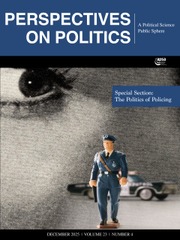No CrossRef data available.
Article contents
The Self-Orientalizing Republic of Iran
Review products
Published online by Cambridge University Press: 31 December 2024
Extract
On September 13, 2022, a young Kurdish Iranian woman named Mahsa Amini, known to her family as Jina, entered a police station in Tehran, under detention for not sufficiently covering her hair with a headscarf. Within hours, Amini was transferred from the police station to a nearby hospital in a coma. At the hospital, her family told journalists that she had been beaten by law enforcement officers. When Amini died on September 16, 2022, demonstrators gathered outside the hospital demanding an inquiry into Amini’s death. Over the next several days, protests multiplied across Iran demanding more freedoms for women, including the right to show their hair in public, and more freedoms for all Iranians, including democratic reforms and the removal of the leader of the Islamic Republic. Suppression of the protests led to the deaths of more than five hundred protestors and the arrest of tens of thousands (UN HRC 2024, 4–6).
- Type
- Book Review Essay
- Information
- Perspectives on Politics , Volume 22 , Issue 4: Special Section: Migrant Acceptance and Inclusion , December 2024 , pp. 1291 - 1296
- Copyright
- © The Author(s), 2024. Published by Cambridge University Press on behalf of American Political Science Association


